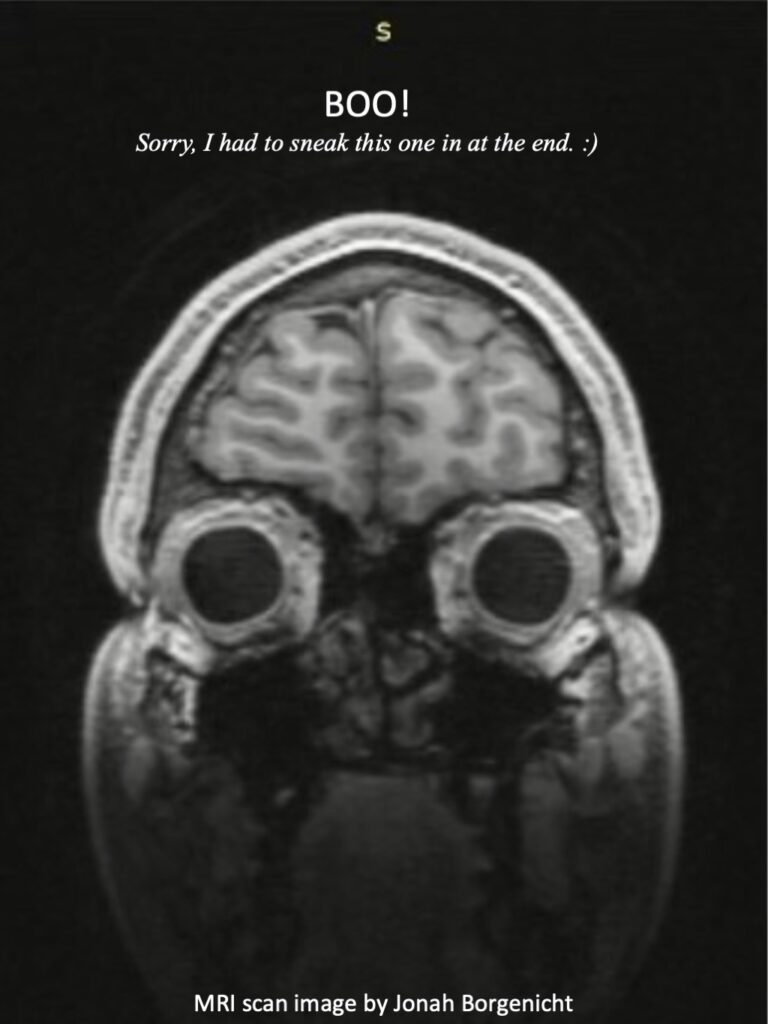Trading Darkroom Photography for Brain Imaging
Post by Amanda Jones, undergraduate in Psychology and Social Science pursuing an Interdisciplinary Neuroscience minor at Portland State University. Amanda currently volunteers for the NCANDA-A study in the Developmental Brain Imaging Lab (DBIL) at Oregon Health and Science University.
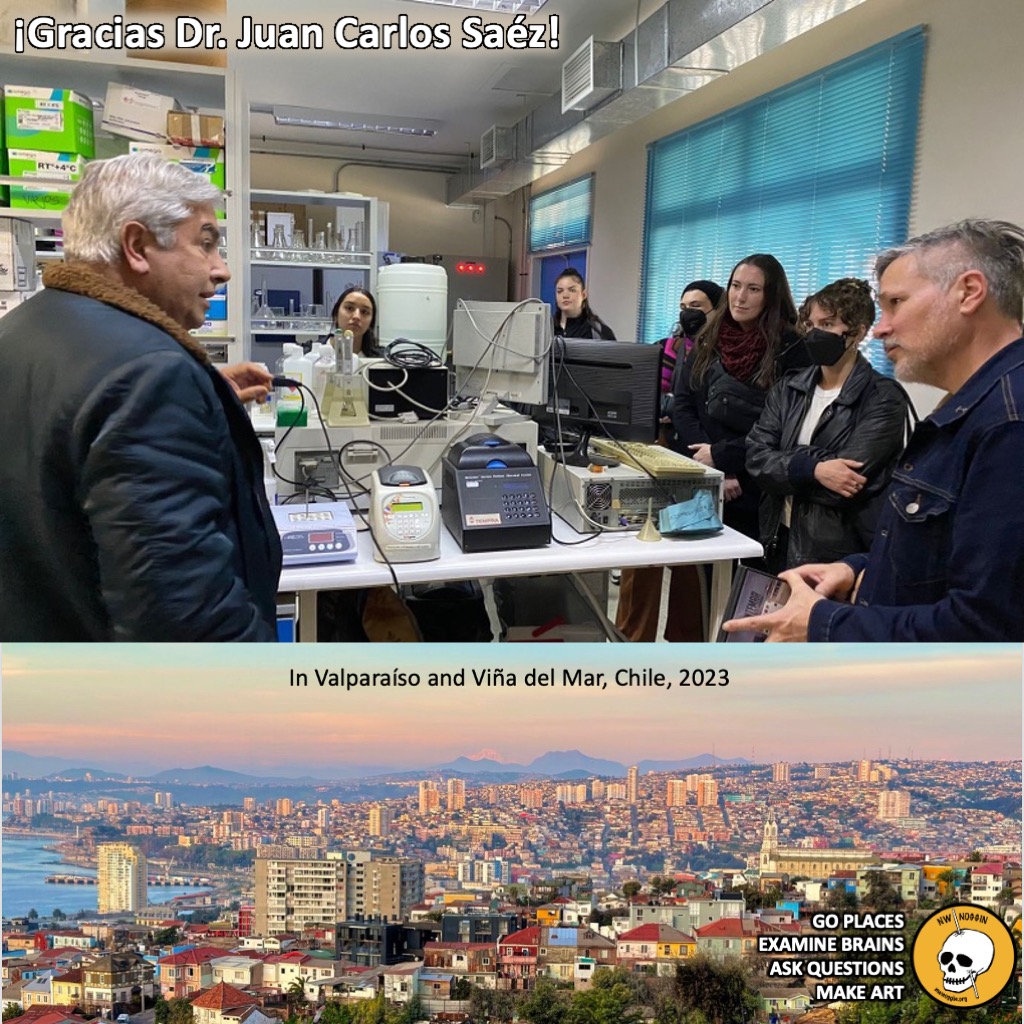
For as long as I can remember, cameras have always fascinated me.
Growing up, the ability to indefinitely freeze a moment in time felt akin to a superpower lingering at my fingertips. As a 90s kid, no loaded roll of film within the family cameras would go unexposed for long once in my possession.
The building anticipation, which grew until the time came to retrieve the fresh prints of my creations from the local drugstore, became addicting. I had always hoped to become an artist one day, and photography allowed me to share snapshots through the lens of my own eyes with the world.

From 2009-2013, I pursued a Bachelor’s in Fine Art Photography at the University of Arizona in Tucson.
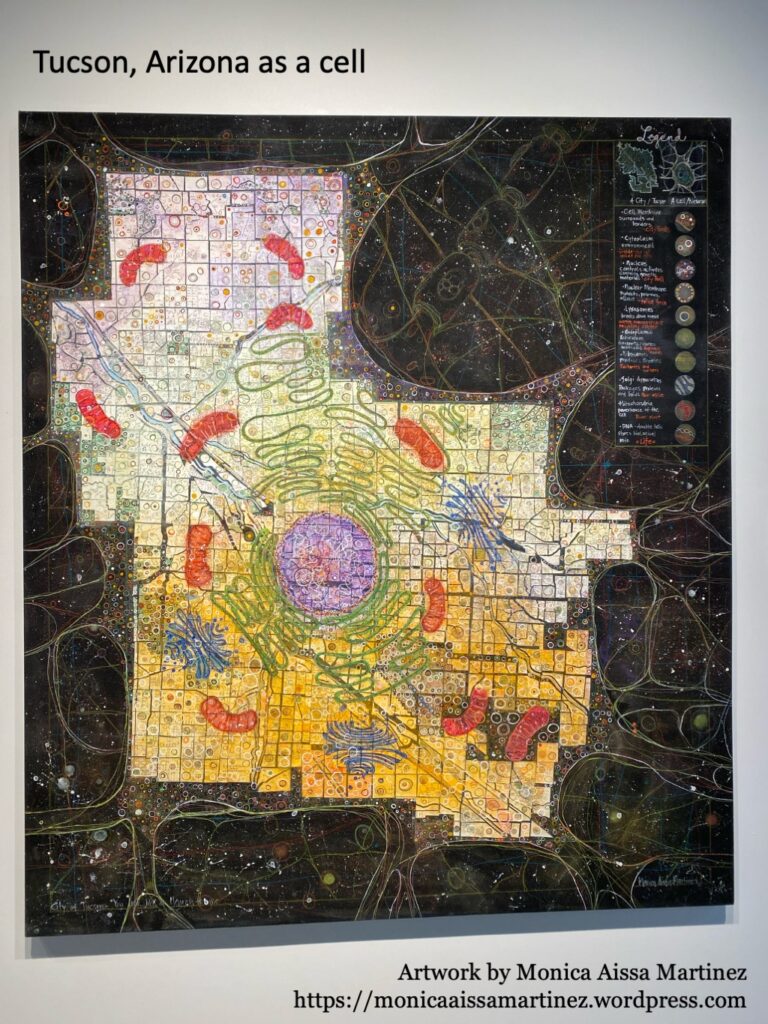
LEARN MORE: Monica Aissa Martinez
As years went on, I experienced more in life that inspired me to return to college in hopes of a career improving the lives of people who’ve experienced traumatic events in one way or another. I enrolled at Portland State University (PSU) for their winter 2022 term and eventually declared a Bachelor of Science in Psychology and Social Science, with a minor in Interdisciplinary Neuroscience. This concoction has allowed me to learn about humans, from the neurons in our brains to how we structure the world around us – micro to macro. However, I still dream of eventually conjuring up a career combining my love for science and imagery.
Knowing I would need research experience under my belt to work toward my goal of completing graduate school, I was pleased to learn that one of the requirements for my interdisciplinary neuroscience minor includes a choice between community outreach or research experience.

LEARN MORE: Interdisciplinary neuroscience minor at Portland State University
LEARN MORE: More Than One Path to Research
LEARN MORE: What is Research Like?
Upon first contemplation of these options, neuroscience research seemed daunting and out of reach for someone like me, an undergraduate still working toward a Bachelor of Science degree. So, I decided to learn more about working in research by attending the 2023 Summer Research Academy held at PSU and left with a new perspective. The big lesson I took away from the academy is that research is for everyone, even inexperienced undergrads like me! With a newfound motivation to dip my toes into the world of scientific research, I planned to set off to find labs in need of a volunteer.

LEARN MORE: NIH Voices of All of Us
As fate would have it, this “search” practically landed in my lap one month later when I met my friend, Alicia Johnson, through an unrelated volunteer job. Alicia told me she used to work as a research assistant (RA) in the Developmental Brain Imaging Lab (DBIL), led by Principal Investigator (PI) Dr. Bonnie Nagel at Oregon Health and Science University (OHSU).
Imaging!
That word immediately piqued my interest as she described how she worked on the National Consortium of Alcohol on Neurodevelopment in Adolescence – Adulthood (NCANDA-A) study from its start in 2012 until 2018. Alicia offered to recommend me as a volunteer, and I excitedly accepted. One application and two interviews later, DBIL hired me as a volunteer on the NCANDA-A study!

LEARN MORE: Developmental Brain Imaging Lab (DBIL) at OHSU
LEARN MORE: National Consortium on Alcohol and Neurodevelopment in Adolescence (NCANDA)
The NCANDA-A study’s mission seeks to uncover how developing adolescent brains respond to early alcohol consumption as well as investigate any potential early signals of alcohol use disorders (AUDs).
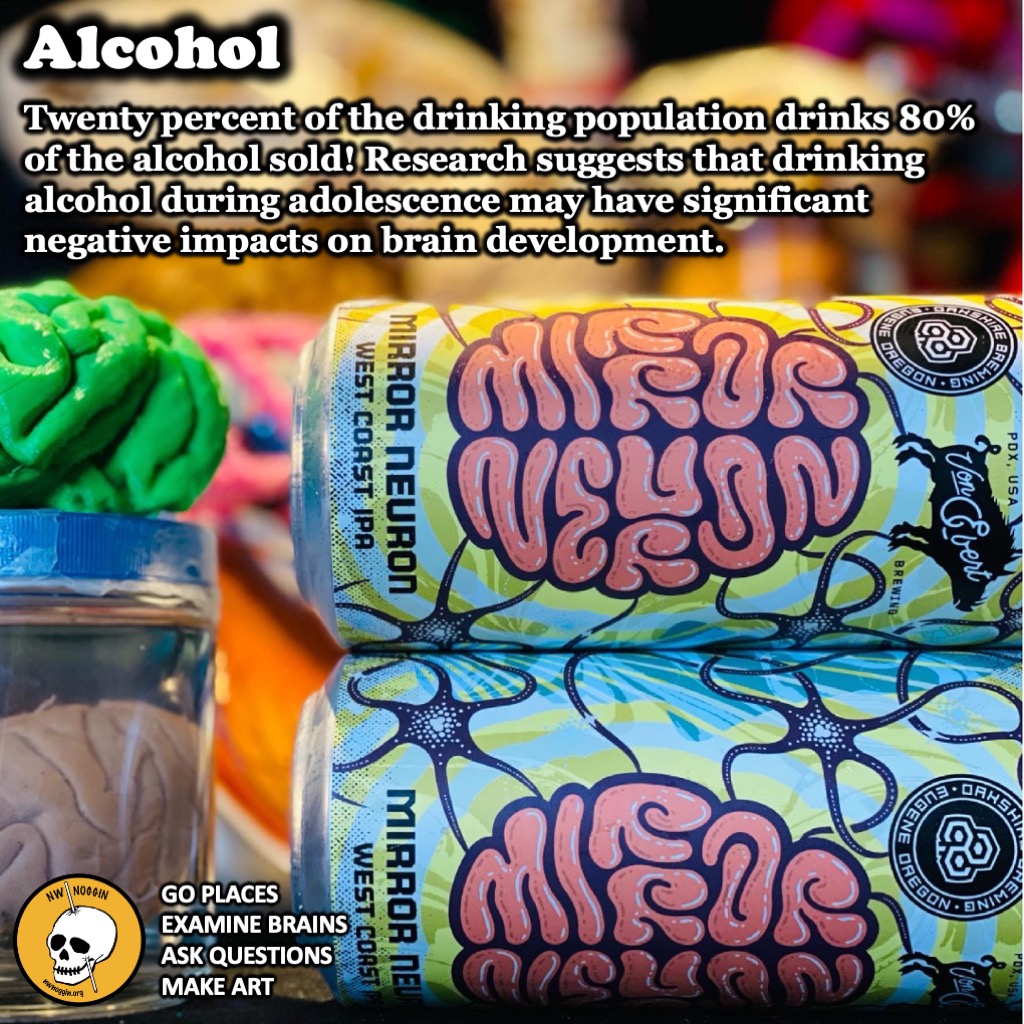
LEARN MORE: Understanding Alcohol Use Disorder
LEARN MORE: Alcohol and the Brain: An Overview
LEARN MORE: Alcohol and the Adolescent Brain
Alongside OHSU, the consortium includes the University of California San Diego, Stanford Research Institute International, Duke University, and the University of Pittsburgh. Combined, each location’s team of researchers has been gathering data from 2012 to the present from participants aged 12-21 years old during baseline assessments. Today, in year 10 of the study, the oldest study participants are 32 years old. Each group of researchers within the consortium collects data to pool from their share of nearly 850 total participants across all five sites.
OHSU’s team focuses on the adolescent brain’s emotional, executive, reward-based, and resting-state networks.

Around 150 research participants visit the lab annually, undergoing interviews, multiple cognitive assessment batteries, MRI scans, and urine and saliva sampling. Through these tools, researchers look for increased vulnerabilities toward adolescent psychopathology.

Training is essential for research
Before I could start helping the team with their study, I had to complete a mountain of trainings.
I spent many hours learning about the International Review Board (IRB), varying conflicts of interest, participant confidentiality, MRI scanner safety, OHSU’s natural disaster and emergency protocols, etc. As tedious as some trainings were, all serve a vital purpose. Once online trainings were completed, I got to shadow my first MRI scan, sit in as a pretend participant, and have a go at each neuropsychological assessment battery to help train a new RA. Colleagues showed me how to send retention mail to NCANDA-A study participants, such as printed pictures from their annual MRI scans and birthday cards. Since my early January start in the lab, I am still learning more through hands-on training.

Shoutout to Jonah Borgenicht from DBIL for allowing me to use his MRI photos!
LEARN MORE: Magnetic Resonance Imaging (MRI)
LEARN MORE: Magnetic Resonance Imaging: Principles and Techniques

Through DBIL, I’ve observed many images of various people’s brains.
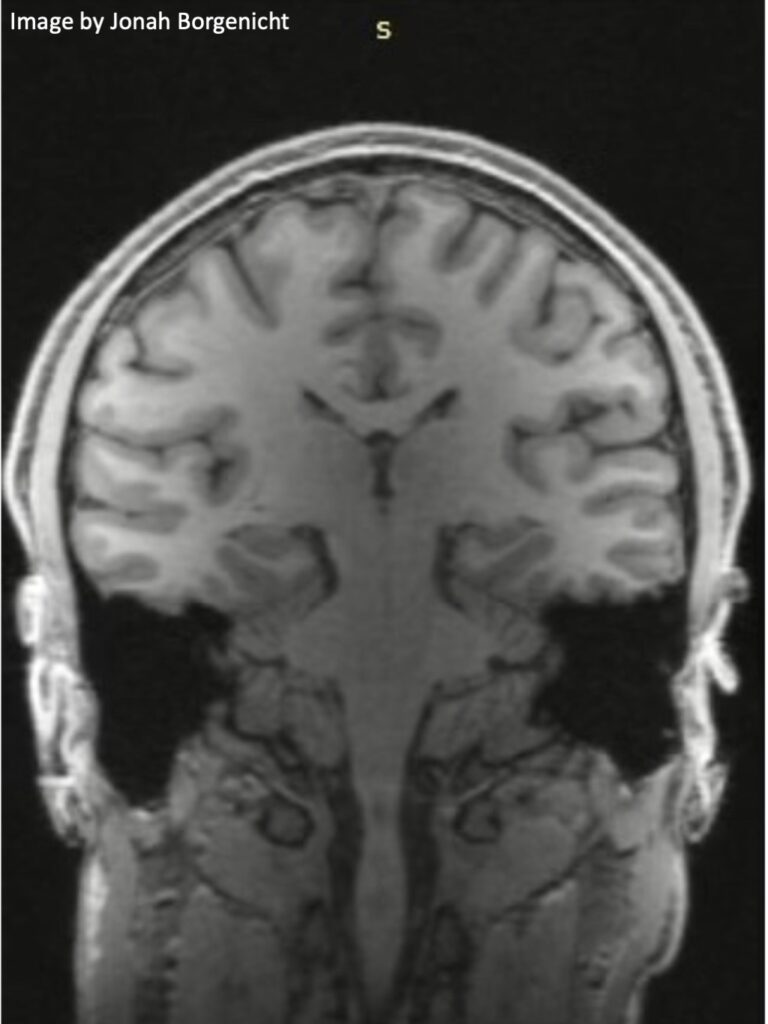
Like fingerprints, no two are exactly alike.
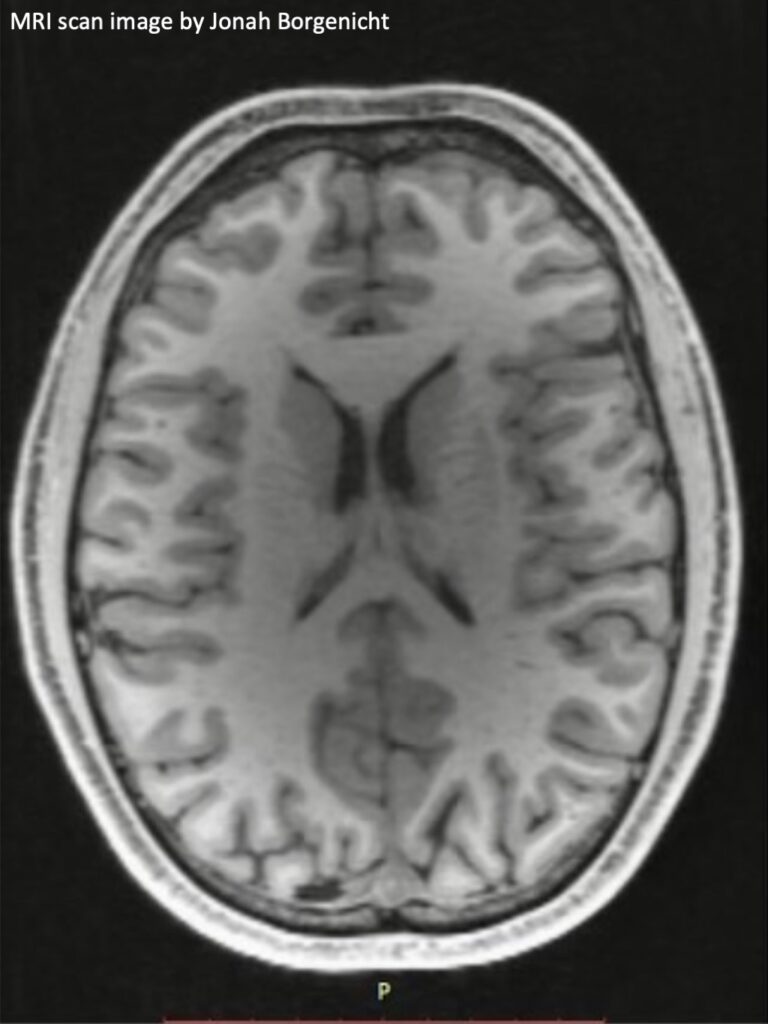
Each scan shows a contorted maze of folds and layers within the brain. It takes me some time to make sense of what I’m observing, which feels reminiscent of my preferred photography style. I love to shoot untouched, everyday scenes and objects from perspectives that make reality seem foreign and abstract (see examples below). The goal is to draw viewers in, make them slow down, and think about what they’re observing and how the frame was shot.
Now, I’ll be honest: I am not (yet) formally trained to read MRI scan images, but the challenge feels familiar and intrigues me. I’m hungry to learn more.





As I sat in the MRI control room watching a participant scan for the first time, my anticipation bubbled as I waited for the slices of brain images to appear on the technician’s computer screen.

The feeling reminded me of the same excitement I had as a kid heading back to the drug store to pick up my processed film and printed photographs.
One aspect of cognition that NCANDA-A studies in its participants relates to what I was experiencing – anticipatory reward. This describes when the brain’s reward centers become activated, particularly the mesolimbic pathway responsible for releasing dopamine (DA) in nucleus accumbens from neurons whose cell bodies are in the ventral tegmental area (VTA). By mediating the release of DA, the VTA aids in regulating learning, memory, reward consumption, and addiction behaviors. Drinking alcohol causes an influx of dopamine, and after a while, one can become conditioned to this reward through cues predicting alcohol consumption. Think about the Pavlovian response.

IMAGE: Neuroimaging of the dopamine/reward system in adolescent drug use
LEARN MORE: The Brain’s Reward System in Health and Disease
LEARN MORE: Mesocorticolimbic Dopamine Pathways Across Adolescence
LEARN MORE: Behavioral Functions of the Mesolimbic Dopaminergic System
LEARN MORE: Alcohol: mechanisms along the mesolimbic dopamine system
LEARN MORE: The dopamine system and alcohol dependence
LEARN MORE: Dopaminergic and noradrenergic manipulation of anticipatory reward
LEARN MORE: Synapses to Shares
LEARN MORE: Classical Conditioning
What can help curb this response? Inhibition!
Another element of cognition the study hones in on is the ability to restrain oneself from acting on these cues. This is known as response inhibition, controlled by the still-developing adolescent frontal lobe. The frontal and prefrontal cortex are responsible for impulse control, judgment, and decision-making, and early alcohol consumption has been linked to hindrances in these regions. MRI scans allow researchers to track any differences in the structural development of participants’ brains annually.
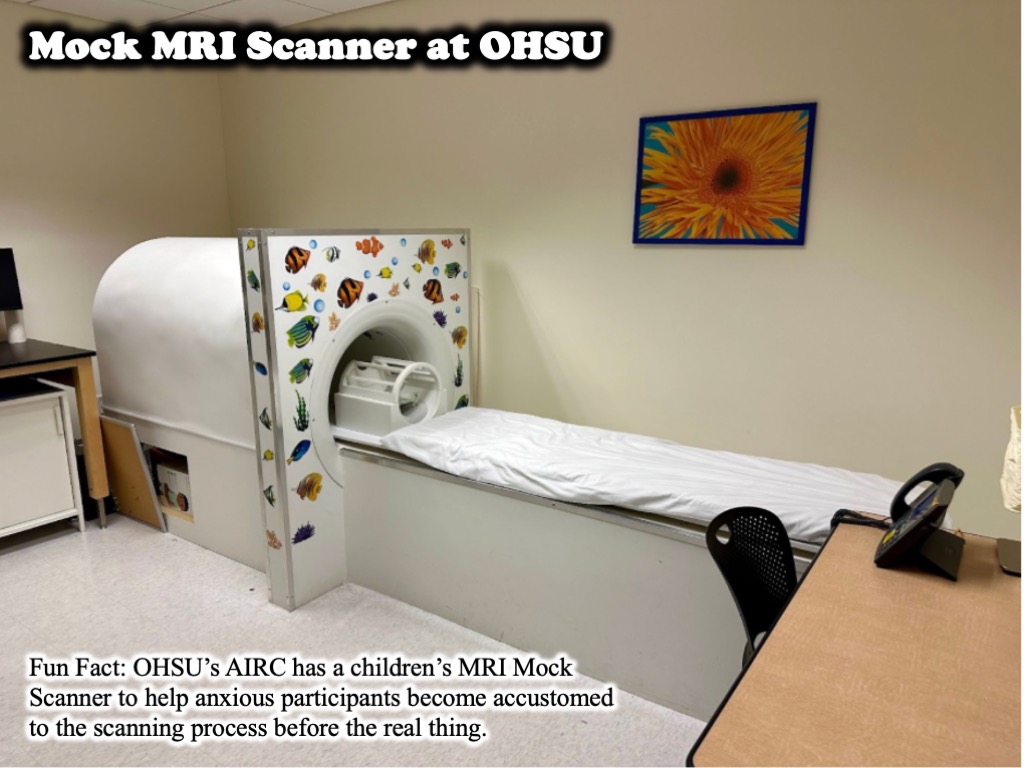
LEARN MORE: Neural Substrates of Inhibitory Control Maturation in Adolescence
LEARN MORE: Inhibitory Control Development: A Network Neuroscience Perspective
LEARN MORE: Response inhibition in adolescents is moderated by brain connectivity and social network structure
LEARN MORE: The development of inhibitory control in adolescence and prospective relations with delinquency
Ok, side note – the commute to OHSU does not suck when you get to take a sky tram overlooking the beautiful City of Portland.

LEARN MORE: Portland Aerial Tram
One day, on my way up to OHSU’s Marquam Hill campus, I got on the tram and watched as two parents and their young son, who had just deboarded, exited and reentered the terminal gates and reboarded. They had been taking their son up and down the line numerous times for his birthday. As the boy hypnotically stared out at the expansive view, one parent asked, “What should we do after this?” The other tiredly responded, “I don’t know…maybe we could ride the MAX for a few hours?” Laughing to myself, I was again reminded of how unique and special this mode of transportation to work is.

Ok, back to business.
Let’s focus on why studying alcohol and other drugs’ effects on the developing brains of adolescents is so imperative. Historically, scientific research has primarily studied alcohol effects in adults. However, the first initiation for alcohol use usually begins in adolescence, as it’s estimated that, worldwide, 27% of people between the ages of 15 and 19 years old have used alcohol within the past month. Compared to youth who began drinking alcohol at the age of 21, those aged 15 or younger are four times more at risk of developing an AUD. Those who wait longer than 21 years old to drink alcohol see an annual 14% decrease in risk for each extended year.

LEARN MORE: Alcohol and the developing adolescent brain
Although adults tend to consume alcohol more regularly than adolescents, adolescents tend to consume more alcohol in a shorter amount of time when they do drink. This is referred to as binge drinking – when one has multiple alcoholic drinks on a single occasion. This counts as 4+ drinks for females and for males, 5+ drinks. Research shows that heavy alcohol consumption during this crucial time for brain development can lead to damaging consequences, such as a reduction of volume and abnormal maturation in both white and grey matter. Cognitive discrepancies such as poorer working memory, inhibition, and decision-making abilities have been observed. These adolescent brains must spend a more significant amount of energy to perform the same cognitive tasks as their sober peers. Moreover, there is still an urgent need for effective treatments for AUDs and other substance use issues, as only 6% of adolescents and 8% of young adults fitting the criteria receive assistance. Sadly, even for the lucky ones who do receive services, by one year of receiving treatment, one-third to one-half relapse and end up right back where they started.
LEARN MORE: Understanding Binge Drinking
LEARN MORE: Get the Facts About Underage Drinking
LEARN MORE: Adolescent Binge Drinking
It’s clear to me why the NCANDA-A study is so needed, and it has been an honor and privilege to help serve such valuable scientific research.
So far, three months into my nine-month to one-year opportunity volunteering for DBIL, I’ve gained a broader appreciation for what imaging offers us, from creative to scientific.
This experience has and will continue to help me understand more about neuropsychology in ways unattainable within classroom settings. I’ve developed a craving to dive deeper into the different methods neuroscience utilizes to learn more about the brain and, ultimately, ourselves.
